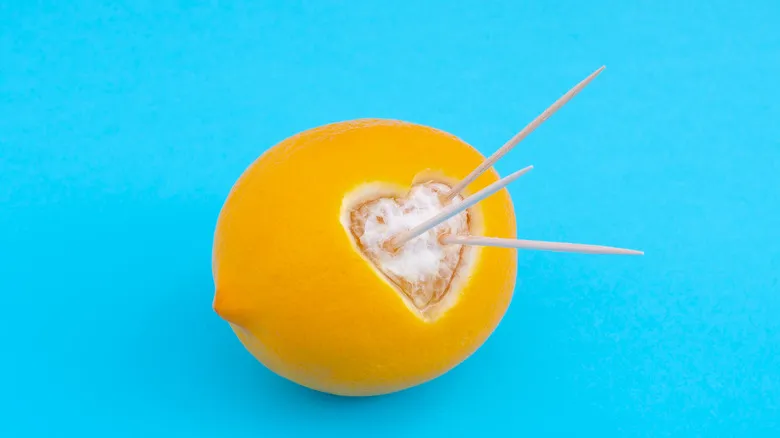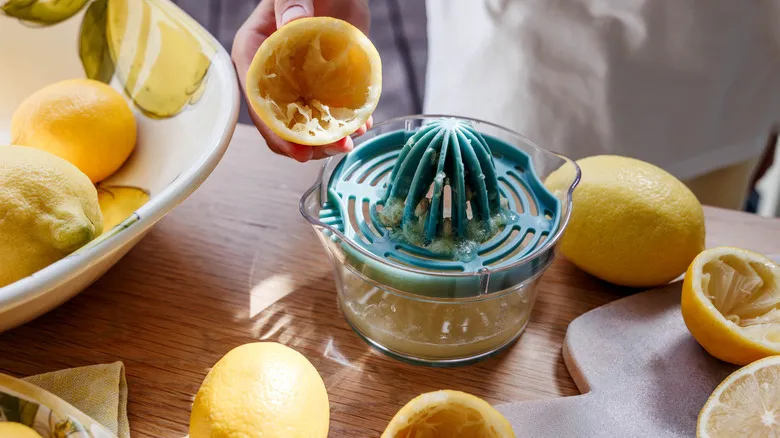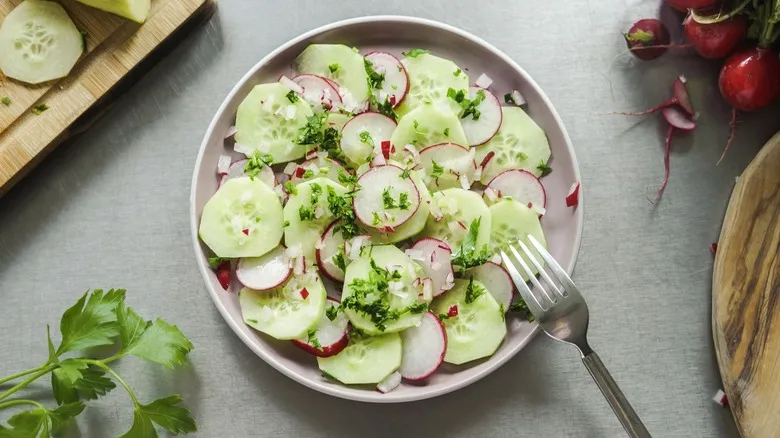1. Use the microwave

We all know how frigid grocery stores can be. When you bring a lemon home from that cold environment and try to squeeze it right away, you may find the citrus fruit tough and resistant. The same applies if you store your lemons in the refrigerator until you're ready to use them. This is because exposure to low temperatures causes the juicy membranes to harden, making it challenging to extract any juice. With chilled lemons, you end up exerting more effort for less liquid.
If you start with a cold lemon, simply place it in the microwave for about 20 to 30 seconds, depending on its size. As the lemon warms, it will become softer, allowing the juice to flow more easily. After removing the lemon from the microwave, let it cool for a minute so that the peel is no longer warm to the touch.
2. Roll the lemon

Similar to the microwave technique, this tip is an excellent way to prepare your lemon before you start juicing. You can combine this method with the microwave trick or any other suggestions on this list. All you need is your hand and a sturdy, flat surface like a table or countertop to begin.
Using the palm of your hand, roll the lemon back and forth on the surface, applying pressure as you go. Don’t hesitate to press down firmly, as the aim is to loosen and break open the juice pockets inside. You’ll know you’ve rolled enough when the lemon feels softer and more pliable than when you started. With the lemon’s juicy membranes already ruptured before you even cut into it, you’ll enjoy a rush of juice with just a gentle squeeze. This technique is particularly useful for lemons that are not fully ripe and still firm.
3. Use a fork

When you're ready to start juicing a lemon, it's beneficial to have something besides your hand to extract every last drop of juice. If you lack specialized juicing tools, a simple fork will do the trick. Begin by cutting a ripe, soft lemon in half (using the rolling or microwave method can yield better results).
Next, position the lemon over a container of your choice and insert the fork into the center of the fruit. Move the fork back and forth to break the membranes and release the juice. You may need to insert the fork into various spots on the lemon and repeat this process to extract all the liquid. Keep in mind that this technique won't prevent the seeds from mixing with the juice, so be ready to remove them with a spoon unless you have a mesh strainer to separate the seeds from the juice.
4. Try the toothpick hack

If you lack a mesh strainer and want to extract lemon juice without dealing with seeds, consider trying a popular TikTok hack. Instead of cutting the lemon, use a toothpick to create a hole at the stem end. Wiggle the toothpick in and out a few times to break up the membranes inside, allowing the juice to flow freely. Then, simply squeeze the lemon to enjoy seedless, pulp-free juice without any mess.
If you attempt this technique with a hard, unripe lemon, you may struggle to extract any juice or find that you need to apply significant pressure. For optimal results with the toothpick method, roll the lemon on a countertop or microwave it briefly to help release the juices. Alternatively, you can create several holes at the bottom of the lemon instead of just one at the stem.
5. Use a citrus reamer or lemon press

If you frequently juice lemons, you might want to think about investing in a citrus reamer or lemon press. These tools are affordable and user-friendly, and they ensure you extract every last drop of juice from your lemons. They are particularly useful when you need to juice a large number of lemons at once.
To use a lemon press, simply place a halved lemon, cut side down, into the press and squeeze it shut. Then, hold the press over your chosen container to catch the juice as it flows out effortlessly. A citrus reamer is another excellent option for thoroughly extracting juice from a lemon. With a handheld reamer, you'll need a mesh strainer to catch any seeds while you twist the reamer inside the halved lemon. There are also manual citrus reamers with an attached tray to collect the juice. Some of these trays have holes large enough for the juice to flow into a bowl below while keeping the seeds contained. To use this type of juicer, simply place a halved lemon on the reamer, cut side down, and twist as the juice drains into the tray.
Recommended

Ina Garten's Hack To Avoid Over-Salting Dishes

Alice Waters' Pro-Tip For Perfectly Crunchy Cucumber Salads

Is Baking Soda The One-Ingredient Solution To Tenderizing Steaks?

Why It's Worth The Effort To Tie Your Beef Tenderloin
Next up

